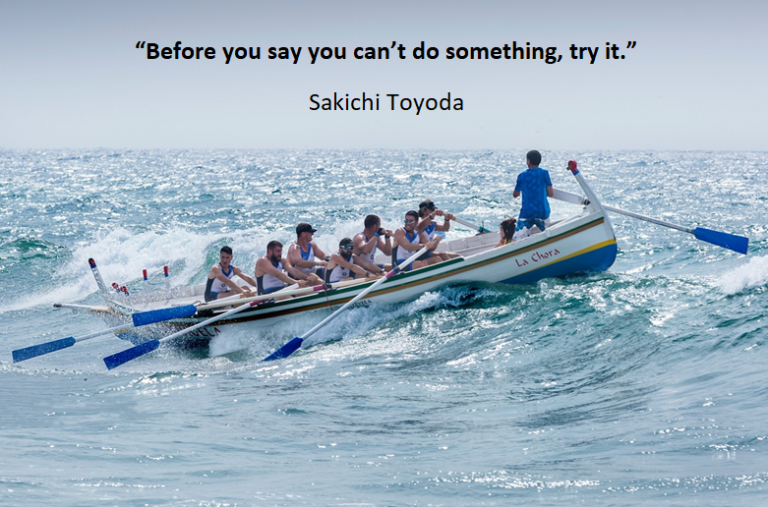On the path to operational excellence, the pursuit of order, efficiency, and harmony in our workplaces and living spaces has become more important than ever. In this article, “5S, Minimalism, and Feng Shui on the Journey to Operational Excellence,” I have focused on the intersection of these three fundamental approaches that enhance quality and optimize efficiency in both the business world and daily life.
The traditional Japanese management philosophy of 5S—Sort, Set in Order, Shine, Standardize, and Sustain—aims to enhance efficiency by organizing workflow in businesses. Minimalism is based on eliminating unnecessary elements and emphasizing only what truly matters. Feng Shui, on the other hand, seeks to regulate the flow of energy in our living spaces to achieve physical and mental balance. Despite their different origins, these three approaches converge on a common ground, offering key principles for achieving sustainable success in modern organizations.
I would like to share my belief that overcoming the challenges on the path to operational excellence and leading a more productive life is possible by utilizing the right tools and methodologies. The depth and flexibility offered by these three approaches make them highly relevant to the demands of the modern era.
What is 5S?
The 5S concept is a systematic method derived from the first letters of five Japanese words: Seiri (Sort), Seiton (Set in Order), Seiso (Shine), Seiketsu (Standardize), and Shitsuke (Sustain). This philosophy is deeply embedded in Japanese daily life.
Since World War II, two main frameworks have emerged in Japan for understanding and implementing 5S in business environments. One was proposed by Osada (1991), and the other by Hirano (1996).
Osada’s Perspective on 5S: A Philosophy for Life and Work
The first 5S implementation was led by Takashi Osada, one of Toyota’s executives. According to Osada, the first step in any quality improvement initiative should be the 5S action, which involves organizing the workplace, keeping it clean and orderly, maintaining standard conditions, and committing to the discipline necessary for achieving high-quality work. He viewed 5S not just as a workplace practice but as a philosophy applicable to both professional and personal life.

According to Osada, 5S is a fundamental part of Japanese culture and society. In his view, 5S is not just a technique or tool, but a philosophy for both life and the business world. This perspective highlights the key difference between Osada’s approach and Hiroyuki Hirano’s 5S philosophy.
Hirano’s Perspective on 5S: A Technique or Tool
Around the same period as Osada, Hiroyuki Hirano (1995) developed an alternative version of 5S, but with a more practical approach. Unlike Osada, who saw 5S as a philosophy, Hirano focused on 5S as a structured technique or tool to enhance workplace efficiency and productivity.

Comparison of Osada and Hirano’s Perspectives on 5S
-Key Focus Areas:
Hirano: Emphasizes the first two S’s—Seiri (Sort) and Seiton (Set in Order)—as the most critical steps.
Osada: Highlights Shitsuke (Discipline) as the most essential element.
-Implementation Approach:
Hirano: Adopts a top-down approach to implementing 5S, where leadership drives the initiative.
Osada: Advocates for a bottom-up approach, encouraging engagement from all levels of the organization.
-Perspective on 5S:
Hirano: Views 5S as a technique or tool to improve workplace efficiency.
Osada: Sees 5S as a philosophy applicable to both work and life.

What is Feng Shui?

The Chinese words “feng” and “shui” mean “wind” and “water”, respectively. This concept originates from an ancient poem that describes how human life is interconnected with its surroundings and flows in harmony with them.
With a history of over 5,000 years, Feng Shui is a method of arranging living spaces to align with human existential characteristics. It is believed that applying Feng Shui principles can lead to better health, harmonious relationships, personal growth, career advancement, and increased wealth.
One of the most fundamental teachings of Feng Shui is to declutter your environment. Get rid of items you no longer use, do not need, or that are broken or malfunctioning. Even if they are not in use, such objects block the flow of renewal and freshness in your home. Let go of the old to make space for the new.
What is Minimalist Living?
According to its official definition in the Oxford Dictionary, minimalism is an aesthetic principle. However, over time, the term has evolved to hold different meanings for different people. This is largely due to the flexibility of the concept “less is more”, which can be applied to lifestyle, art, fashion, architecture, literature, music, and home decor.
The term “minimalism” gained popularity in the 1960s among young artists who opposed the rigid traditions of fine arts. Some of these artists included painter Agnes Martin, sculptor and artist Donald Judd, and artist Frank Stella. Over time, minimalism became a commonly used term in writing, painting, architecture, and other creative and design fields.
Minimalist living is about eliminating what you don’t use or need, creating a decluttered, simple environment, and therefore leading a simpler life. It means living without obsession over material possessions or the urge to stay excessively busy with unnecessary activities. A minimalist lifestyle involves using simple tools, owning a minimal wardrobe, carrying fewer belongings, and embracing a life of simplicity.

Let’s Not Forget Marie Kondo
Marie Kondo, also known as KonMari, is a Japanese organizing consultant, author, and TV show host. She has written four books on organizing, which have sold millions of copies worldwide and been translated into multiple languages. Her book, The Life-Changing Magic of Tidying Up (2011), has been published in over 30 countries, becoming a bestseller in Japan and Europe. In 2014, it was also released in the United States, gaining widespread popularity.
The Six Key Rules of the KonMari Method:
- Commit yourself to tidying up.
- Imagine your ideal lifestyle.
- Discard items first. Before letting go of an item, thank it sincerely for serving its purpose.
- Tidy by category, not by location.
- Follow the correct order.
- Ask yourself: “Does this item spark joy?” If it doesn’t, it’s time to let it go.
Final
Being clean and organized is a principle embraced by all these philosophies and has a positive impact on human psychology. Whether you are at work or home, eliminating unnecessary items will help you feel more at ease.
Today, many companies have adopted remote work, and applying these methods at home can significantly boost your productivity.
Recommended Films & Books on the Topic:
Netflix – Tidying Up with Marie Kondo
A Netflix TV series released on January 1, 2019, where Marie Kondo visits families and helps them organize their homes using her KonMari method.
Netflix – Less is Now
A documentary about minimalism created by longtime friends Joshua Fields Millburn and Ryan Nicodemus. They share how it’s never too late to start fresh with less and how simplifying life can lead to greater fulfillment.
Recommended Books on the Topic ;
PHOTO



